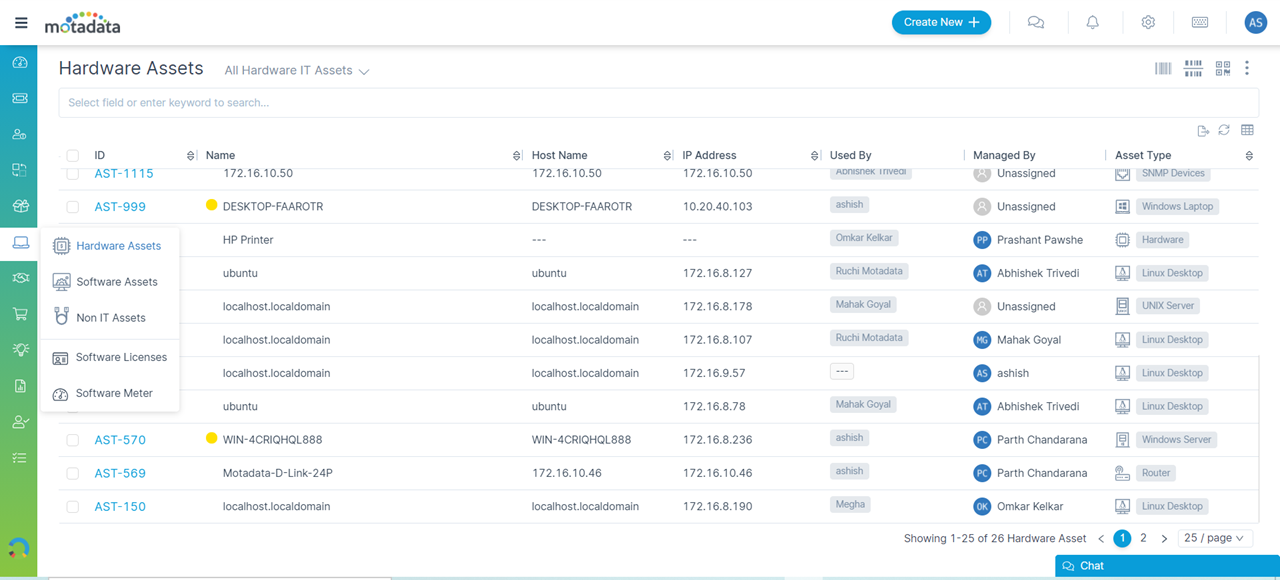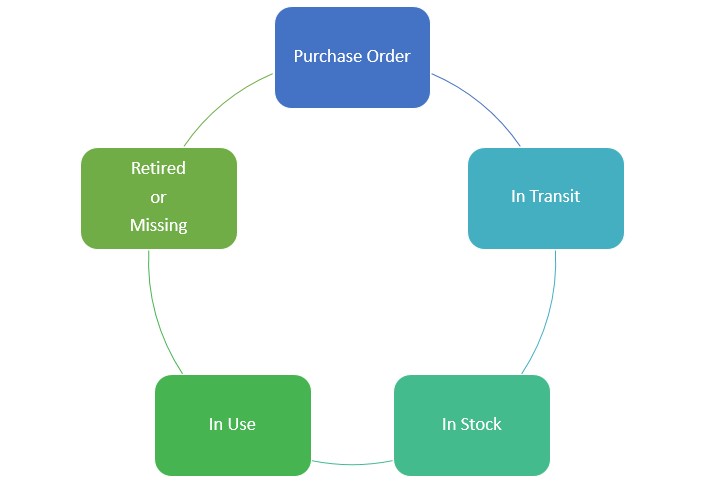Stages of IT Asset Management Life Cycle
Lack of a proper Asset Management leads to limited asset visibility, painful compliance audits and long fulfillment cycle resulting in unnecessary delays and heavy losses.
As modern day organizations solely rely on their digital infrastructure for most of their IT operations & services which majorly run on various IT assets; managing an asset life cycle is critical for day to day operations like –
- Procurement: Tracking of new purchases of asset.
- Storage: Assets have to be stored properly so they can be used when required.
- Assignment: Traditional asset management methods fail to meet future asset assignment and business requirements.
- Disposal: Businesses are careful with what they can throw out due to changing environmental laws. Scraps have to be processed before they can be thrown out.
IT assets are generally managed using IT asset management (ITAM) software.
An ITAM software allows to tackle the asset management life-cycle stage-wise; this gives the organization complete visibility and control of its IT assets.
Here’s an interesting fact:
A recent assessment by Deloitte found that companies can save an average of 25% on their annual maintenance costs by managing their software assets properly.
Fascinating right!
Motadata IT Asset management offers a robust CMDB that clearly segments assets based on life-cycle stages, and out-of-the-box, the software offers 5 stages which we will be discussing.
Before talking about the stages, let’s clear a few terminologies to give some background.
What is an IT Asset?
IT assets within a company represent the capex component of IT infra. They may be software or hardware.
Hardware could comprise of workstations and their parts, network devices, printers, etc. Software could comprise of licenses, installations, OSs, etc.
What is IT Asset Management?
Based on IAITAM (International Association of IT Asset Managers), IT asset management is a group of business practices which integrates all IT resources in a business.
It oversees the general life-cycle of resources by linking financial, stock, and contractual and risk management duties for decision making.
5 Stages in IT Asset Life Cycle Management
These stages exist to assist organizations mainly in tracking and planning. The stages are as follows:
1. Purchase Order:
A separate module captures this stage. When someone requests a new asset, the system converts it into a purchase order. The PO then goes through an approval process. After clearing payments and marking the asset as received, the system automatically creates an entry for the asset in the CMDB.
2. In Transit:
When a new asset is purchased, Motadata purchase management module automatically tracks the purchase status and creates an entry in the CMDB when marked as received, but the default stage always goes to in-stock. It may happen that the asset is still in transit and for this reason this stage exits.
3. In Stock:
The cycle starts at this default stage when the system adds a new asset to the CMDB through a PO. This stage also shows the unused inventory available to the organization, ready to be deployed or assigned.
4. In Use:
This stage shows the assets in operation. Motadata ITSM allows its users to filter assets based on stage; using this feature, an organization can know about its asset utilization.
5. Missing:
The missing stage shows assets that aren’t being tracked by Motadata’s advanced discovery process or assets that have been stolen. This stage filter is very useful in ascertaining leakages.
6. Retired:
This stage represents the end of asset life-cycle. Assets that are scraped or sold are put in this stage. This stage allows control over the disposal process of assets.
Conclusion
Motadata ITAM helps businesses to optimize managing of asset life-cycle.
It begins at the preparation phase and moves in a linear fashion before the asset is no longer useful and needs to be disposed of.
Motadata ITAM makes it possible for an organization to be aware of the operational expenses, software use frequency, component related data and many more data points of an asset during its life. All these metrics give an operational edge to our users.
Do you want an edge in managing your assets? Download Motadata ITAM for 30 days Free.
FAQs:
IT Asset Lifecycle Management (ITALM) refers to the process of tracking and managing an asset from its procurement to disposal. It involves managing the asset’s performance, usage, and cost throughout its entire lifecycle.
The key stages include:
- Procurement
- Deployment
- Usage and Maintenance
- Decommissioning
- Disposal
ITALM helps organizations optimize asset utilization, reduce costs, enhance asset performance, ensure compliance, and manage risks associated with asset management.
Common challenges include maintaining accurate asset records, ensuring timely maintenance, managing software licenses, and effectively disposing of outdated or obsolete assets.





